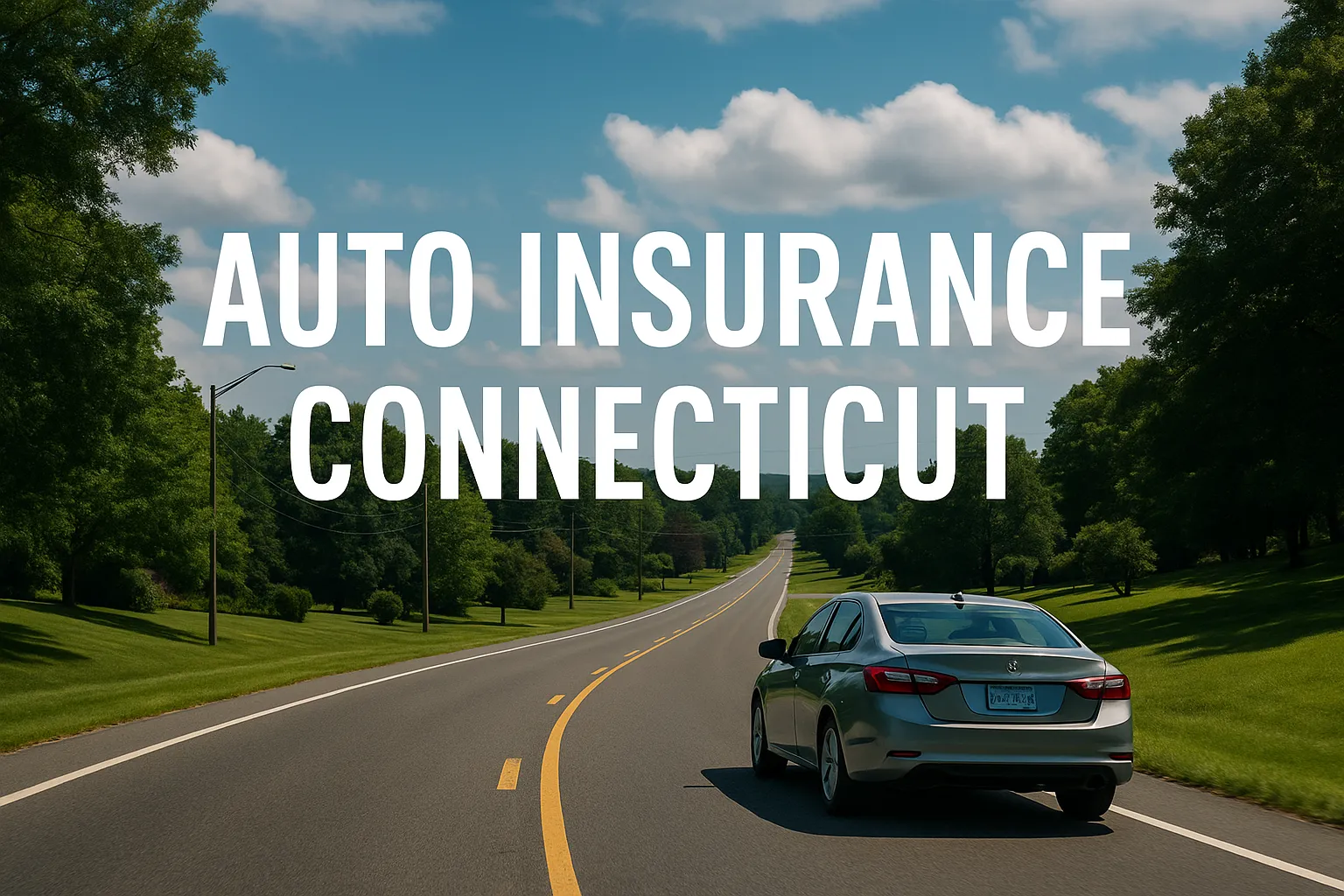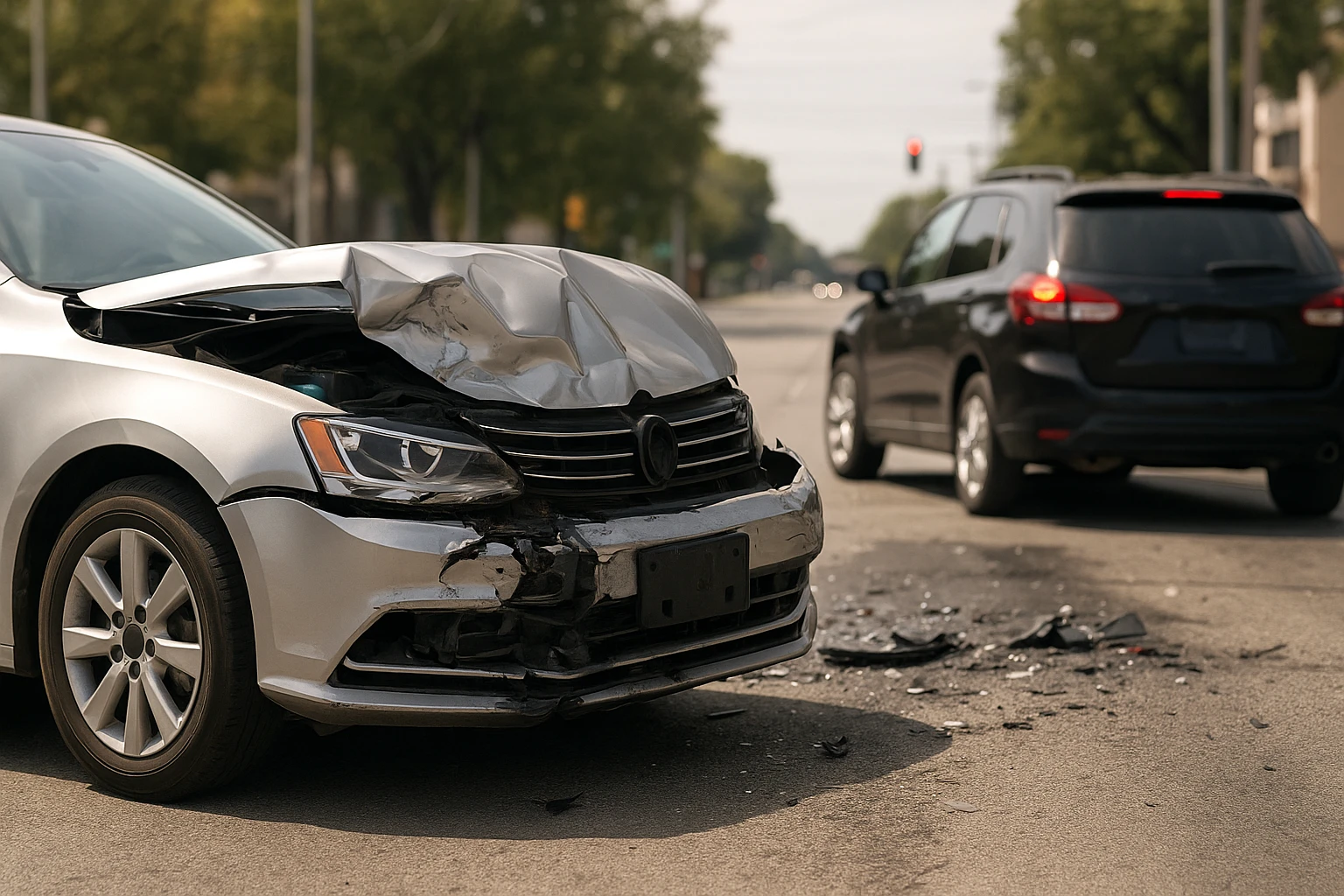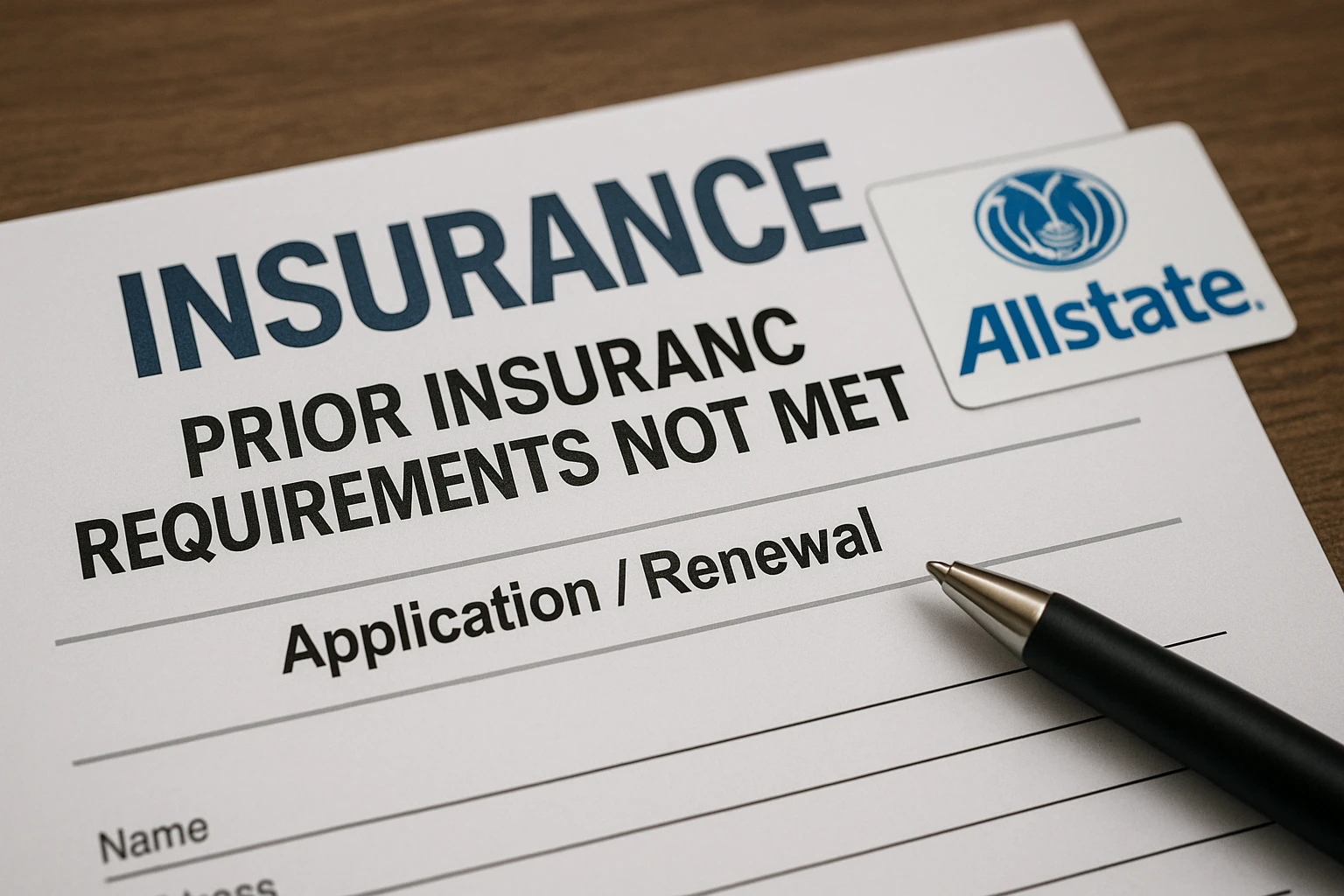Affordable Auto Insurance in Connecticut – Compare Rates & Save Big (2025)
📑 Table of Contents
- 1. Understanding Auto Insurance Requirements in Connecticut
- 2. Average Auto Insurance Rates in Connecticut
- 3. Top Auto Insurance Companies in Connecticut (2025)
- 4. Factors That Affect Auto Insurance Rates in Connecticut
- 5. Available Auto Insurance Discounts in Connecticut
- 6. SR-22 Insurance in Connecticut
- 7. Tips to Lower Auto Insurance Costs in Connecticut
- 8. How to Switch Auto Insurance Providers in Connecticut
- 9. Common Mistakes to Avoid When Buying Car Insurance in Connecticut
- 10. Real-Life Policy Comparison: Urban vs. Rural CT Drivers
- 11. Legal Rights During an Auto Insurance Claim in Connecticut
- 12. Connecticut Auto Insurance FAQs
- 13. Car Insurance Trends in Connecticut (2025 and Beyond)
- 14. Case Study: How a Family in Connecticut Saved $700 a Year on Car Insurance
- 15. Final Checklist for Choosing Auto Insurance in Connecticut
- 16. Scenario-Based Savings: Real Examples of Lowering Auto Insurance Costs
- 17. Auto Insurance Costs: Urban vs. Rural Areas in Connecticut
- 18. High-Risk Drivers: How to Get Coverage in Connecticut
- 19. Notable Connecticut Auto Insurance Laws (2025 Update)
- 20. Summary and Call to Action
1. Understanding Auto Insurance Requirements in Connecticut
1.1 Mandatory Minimum Coverage in Connecticut
Connecticut law requires all drivers to carry a minimum amount of auto insurance. These include:
-
Bodily Injury Liability: $25,000 per person / $50,000 per accident
-
Property Damage Liability: $25,000
-
Uninsured/Underinsured Motorist Coverage: $25,000 per person / $50,000 per accident
1.2 Optional Coverages Worth Considering
Besides the state minimum, most drivers add optional protection:
-
Collision Coverage
-
Comprehensive Coverage
-
Medical Payments (MedPay)
-
Gap Insurance
-
Rental Reimbursement
1.3 Penalties for Driving Without Insurance in Connecticut
Connecticut imposes strict penalties for uninsured drivers:
-
$100 to $1,000 in fines
-
License suspension
-
Vehicle registration suspension
-
SR-22 requirement for reinstatement
2. Average Auto Insurance Rates in Connecticut
2.1 Average Costs by Coverage Type
Connecticut’s insurance rates are higher than the national average. Here's a breakdown of average annual costs:
| Coverage Type | Average Annual Cost |
|---|---|
| Minimum Liability Only | $950 |
| Full Coverage | $1,750 |
| Comprehensive Only | $160 |
| Collision Only | $420 |
| Uninsured Motorist | $110 |
2.2 Costs by Age Group
Age plays a major role in determining your premium:
| Age Group | Average Annual Cost |
|---|---|
| Teen Drivers (16-19) | $4,200 |
| Young Adults (20-29) | $2,100 |
| Adults (30-59) | $1,400 |
| Seniors (60+) | $1,100 |
2.3 Premiums by Driving Record
Your driving record affects how much you pay:
| Driving Record | Avg. Annual Rate |
|---|---|
| Clean Record | $1,200 |
| Speeding Ticket | $1,600 |
| At-Fault Accident | $2,200 |
| DUI | $3,000 |
3. Top Auto Insurance Companies in Connecticut (2025)
3.1 State Farm
-
Strong customer satisfaction
-
Offers ride-sharing coverage
-
Competitive for good drivers
3.2 GEICO
-
Cheapest for minimum coverage
-
Good online tools and mobile app
-
Popular among young drivers
3.3 Allstate
-
Safe-driving rewards
-
Highly rated claims satisfaction
-
Offers deductible rewards
3.4 Progressive
-
Snapshot usage-based program
-
Discount for continuous insurance
-
Flexible payment options
3.5 Travelers
-
Headquartered in Hartford, CT
-
Wide range of coverage
-
Good bundling discounts
| Company | Avg. Full Coverage | Avg. Minimum Coverage | A.M. Best Rating |
|---|---|---|---|
| State Farm | $1,420 | $810 | A++ |
| GEICO | $1,370 | $700 | A++ |
| Allstate | $1,600 | $880 | A+ |
| Progressive | $1,550 | $840 | A+ |
| Travelers | $1,490 | $820 | A++ |
4. Factors That Affect Auto Insurance Rates in Connecticut
4.1 Driving History
Clean records lower premiums, while violations increase them significantly.
4.2 Credit Score
CT allows insurers to use credit scores to set rates — better credit equals lower premiums.
4.3 Location Within Connecticut
Urban areas like Hartford and New Haven have higher rates due to theft and accident risk.
4.4 Vehicle Type
High-end or high-performance vehicles often cost more to insure.
4.5 Annual Mileage
Low mileage can earn discounts through low-mileage programs or telematics.
5. Available Auto Insurance Discounts in Connecticut
5.1 Safe Driver Discount
Drivers with no accidents or violations for the past 3–5 years are eligible for up to 25% off.
5.2 Multi-Policy Discount
Bundling your car insurance with homeowners or renters insurance can get you 10%–20% in savings.
5.3 Good Student Discount
Teens or college students with a GPA of 3.0 or higher can get up to 15% off.
5.4 Anti-Theft Device Discount
Installing an anti-theft system in your car may lower your comprehensive premium.
5.5 Usage-Based Program Discount
Telematics programs like Progressive’s Snapshot or State Farm’s Drive Safe & Save offer personalized rates based on your driving habits.
| Discount Type | Average Savings |
|---|---|
| Safe Driver | 10%–25% |
| Multi-Policy | 10%–20% |
| Good Student | Up to 15% |
| Anti-Theft Device | 5%–10% |
| Low Mileage/Telematics | Up to 30% |
6. SR-22 Insurance in Connecticut
6.1 What is SR-22?
An SR-22 is a certificate proving you have the minimum required auto insurance after serious violations like DUI or driving without insurance.
6.2 Who Needs SR-22 in CT?
You might need SR-22 if:
-
You were caught driving uninsured
-
Convicted of a DUI or reckless driving
-
License suspension due to traffic violations
6.3 How Long Is SR-22 Required?
In most cases, SR-22 is required for 3 years from the date of reinstatement.
6.4 How Much Does SR-22 Cost?
-
Filing fee: $15–$25 (one-time)
-
Higher premiums: Expect a 40–60% increase in total insurance cost
7. Tips to Lower Auto Insurance Costs in Connecticut
7.1 Increase Your Deductibles
Opting for a higher deductible on collision and comprehensive can significantly lower your premium.
7.2 Take a Defensive Driving Course
Approved defensive driving courses can lead to a discount of 5%–10%, especially for older drivers.
7.3 Shop Around Every 6-12 Months
Rates change frequently. Compare quotes from at least 3–5 insurers to ensure you’re getting the best deal.
7.4 Improve Your Credit Score
Paying bills on time and reducing debts can help lower your premium.
7.5 Remove Unnecessary Coverage on Older Cars
If your car is worth less than $2,000, consider dropping comprehensive and collision coverage.
8. How to Switch Auto Insurance Providers in Connecticut
8.1 Step 1: Compare New Quotes
Use comparison tools or contact companies directly. Be sure to compare:
-
Coverage limits
-
Deductibles
-
Total premium
-
Customer reviews
8.2 Step 2: Avoid a Lapse in Coverage
Never cancel your current policy before the new one starts. Even a one-day lapse can raise your future rates.
8.3 Step 3: Cancel the Old Policy in Writing
Notify your current provider with a formal cancellation request. Request a refund for unused premium if prepaid.
8.4 Step 4: Update Registration with DMV
CT DMV requires you to have insurance continuously. Notify them if changing providers to avoid penalties.
9. Common Mistakes to Avoid When Buying Car Insurance in Connecticut
9.1 Focusing Only on Price
Cheaper isn’t always better. Make sure coverage limits and claim support meet your needs.
9.2 Not Updating Life Changes
Marriage, relocation, or job changes can affect your premium. Inform your insurer promptly.
9.3 Overlooking Deductible Amounts
High deductibles reduce premium but could result in higher out-of-pocket costs in a claim.
9.4 Missing Out on Discounts
Many drivers forget to ask about available discounts. Always check eligibility when getting quotes.
9.5 Not Reading the Fine Print
Understand exclusions, cancellation policies, and claim procedures before buying.
10. Real-Life Policy Comparison: Urban vs. Rural CT Drivers
| Profile | Location | Company | Coverage Type | Annual Premium |
|---|---|---|---|---|
| 30-year-old Teacher | Hartford | GEICO | Full Coverage | $1,920 |
| 45-year-old Engineer | Bridgeport | Progressive | Liability Only | $1,070 |
| 28-year-old Nurse | Stamford | Allstate | Full Coverage | $1,790 |
| 60-year-old Retiree | Norwich | State Farm | Liability + UM | $850 |
| 22-year-old Student | New Haven | Travelers | Full Coverage | $2,560 |
11. Legal Rights During an Auto Insurance Claim in Connecticut
11.1 Right to Fair Claim Handling
Connecticut law requires insurers to process your claim promptly and fairly. You have the right to:
-
Receive an acknowledgment of your claim within 10 business days
-
Get a decision within 30 days of submitting documentation
-
Appeal any claim denial with proper documentation
11.2 Right to Choose Repair Shops
Insurance companies may recommend repair facilities, but you have the legal right to choose your own shop in Connecticut.
11.3 Right to Diminished Value Compensation
After a major accident, your car’s resale value may decrease even if it’s repaired. You can claim diminished value in some cases.
11.4 Right to File Complaints
If you believe your insurer is acting in bad faith or delaying your claim unfairly, you can file a complaint with the Connecticut Insurance Department (CID).
| Legal Right | Description |
|---|---|
| Prompt Claim Processing | Insurers must respond and process claims within statutory deadlines |
| Choice of Repair Shop | You're not obligated to use insurer-recommended facilities |
| Diminished Value Compensation | You can claim reduced resale value after a non-total-loss accident |
| Appeal Claim Denials | You can demand reconsideration or arbitration in case of disputes |
| File Complaint with CID | If unfair treatment occurs, escalate to the state insurance department |
12. Connecticut Auto Insurance FAQs
12.1 Is auto insurance required to register a car in Connecticut?
Yes. Proof of insurance is mandatory before registering a vehicle with the DMV in Connecticut.
12.2 What happens if I cancel my car insurance?
The DMV will be notified and may suspend your vehicle registration. You may also face fines up to $1,000 and reinstatement fees.
12.3 Do I need insurance to drive someone else’s car in Connecticut?
If the car is insured, and you have a valid driver’s license, yes. But you’ll be liable if you cause damage beyond their policy’s limits.
12.4 How can I check my insurance status with the DMV?
You can verify your insurance status at the CT DMV Insurance Compliance portal using your plate number and registration details.
12.5 What if I'm in an accident with an uninsured driver?
Connecticut’s uninsured motorist coverage will cover bodily injuries, but not property damage unless you have collision coverage.
13. Car Insurance Trends in Connecticut (2025 and Beyond)
13.1 Rising Premiums Due to Inflation
In 2025, auto insurance rates in CT are expected to rise by 5–9% due to vehicle repair inflation and increased accident rates.
13.2 More Usage-Based Insurance Adoption
Insurers are expanding telematics programs to offer pay-as-you-drive models, rewarding cautious drivers with lower premiums.
13.3 Stricter Climate Risk Ratings
Because of increased flooding and storm risks, insurers are recalibrating premiums in coastal CT cities like New London and Bridgeport.
13.4 Greater AI in Claims Handling
Claims are being processed faster using AI-powered estimations and digital adjusters, especially for minor incidents.
13.5 Expansion of EV Coverage Options
As electric vehicle ownership increases, insurers in Connecticut are tailoring specific policies to cover battery damage, charging liability, and EV theft.
14. Case Study: How a Family in Connecticut Saved $700 a Year on Car Insurance
14.1 Background
The Martins, a family of four living in Stamford, were paying $2,850/year for full coverage on two vehicles.
14.2 What They Changed
-
Increased deductibles from $500 to $1,000
-
Bundled home + auto insurance with Travelers
-
Removed collision on an older 2008 car
-
Added their teenage son with good student discount
-
Signed up for a telematics program
14.3 Final Result
Their premium dropped to $2,150/year, saving $700 annually without compromising necessary coverage.
15. Final Checklist for Choosing Auto Insurance in Connecticut
15.1 Confirm Mandatory Coverages
Make sure your policy meets Connecticut’s minimum liability and uninsured motorist requirements.
15.2 Compare At Least 3 Quotes
Don’t settle for the first quote you get. Rates vary widely by insurer and ZIP code.
15.3 Review Deductible Options
Decide how much you can afford out-of-pocket in a claim before adjusting your deductible.
15.4 Ask About Discounts
Always ask about all available discounts — you may qualify for more than you think.
15.5 Read the Fine Print
Understand exclusions, claim procedures, and cancellation terms before purchasing the policy.
15.6 Check Insurer Ratings
Use tools like A.M. Best, JD Power, and the National Association of Insurance Commissioners (NAIC) for insights into insurer reliability.
16. Scenario-Based Savings: Real Examples of Lowering Auto Insurance Costs
16.1 Scenario A: Young Single Driver in New Haven
-
Profile: 24-year-old male, clean record, 2020 Honda Civic
-
Initial Premium: $2,480/year (full coverage)
-
Steps Taken:
-
Completed defensive driving course
-
Enrolled in GEICO’s DriveEasy app
-
Increased deductibles
-
Used student discount from grad school
-
-
Final Premium: $1,690/year
-
Savings: $790/year
16.2 Scenario B: Married Couple in Bridgeport
-
Profile: Two drivers, both age 40+, two cars (2017 Toyota, 2021 Ford)
-
Initial Premium: $3,320/year
-
Steps Taken:
-
Bundled with home insurance at Allstate
-
Installed anti-theft devices
-
Enrolled in paperless billing + autopay
-
-
Final Premium: $2,540/year
-
Savings: $780/year
16.3 Scenario C: Retired Driver in Waterbury
-
Profile: 67-year-old female, single car, low mileage
-
Initial Premium: $1,260/year
-
Steps Taken:
-
Switched to Metromile for pay-per-mile usage
-
Applied for AARP membership discount
-
Reduced coverage to liability only
-
-
Final Premium: $880/year
-
Savings: $380/year
17. Auto Insurance Costs: Urban vs. Rural Areas in Connecticut
| City/Town | Avg. Full Coverage Premium | Avg. Minimum Coverage Premium |
|---|---|---|
| Hartford | $1,980 | $990 |
| New Haven | $1,950 | $960 |
| Stamford | $1,870 | $930 |
| Bridgeport | $2,000 | $1,010 |
| Norwalk | $1,840 | $920 |
| Waterbury | $1,700 | $890 |
| Torrington (Rural) | $1,440 | $790 |
| Putnam (Rural) | $1,360 | $760 |
| Windham (Rural) | $1,320 | $740 |
17.1 Key Takeaways
-
Urban drivers pay 20–30% more due to higher traffic, theft, and accident risks.
-
Rural residents often enjoy cheaper premiums but may face fewer provider options.
18. High-Risk Drivers: How to Get Coverage in Connecticut
18.1 Who Is Considered High-Risk?
High-risk status typically includes:
-
Recent DUI or multiple traffic violations
-
Lapsed insurance coverage
-
Teenage or elderly drivers with limited experience
-
Poor credit score
18.2 Recommended Insurers for High-Risk Drivers
| Insurance Company | Special Programs or Notes |
|---|---|
| The General | Accepts high-risk drivers with DUI or lapses |
| Dairyland | Specialized SR-22 and non-standard coverage |
| Progressive | Snapshot helps lower rates even for new drivers |
| National General | Tailored plans for high-risk urban drivers |
18.3 What High-Risk Drivers Can Do to Save
-
Take a defensive driving course
-
Shop for non-standard insurers
-
Avoid lapses — even 1-day gaps can hurt
-
Gradually improve credit and driving record
-
Ask insurers to reassess rates after 12 months of clean driving
19. Notable Connecticut Auto Insurance Laws (2025 Update)
19.1 Automatic DMV Reporting
Connecticut insurers are now required to electronically notify the DMV when a policy is canceled or lapses. This helps reduce uninsured motorists but increases enforcement strictness.
19.2 Mandatory Uninsured Motorist Coverage
Connecticut is one of the few states where uninsured/underinsured motorist coverage is mandatory, protecting drivers from hit-and-run and underinsured crashes.
19.3 Electronic Proof of Insurance
As of 2025, you can now present insurance proof via mobile apps or email during traffic stops or DMV visits.
19.4 Rate Filing Transparency
All insurers in Connecticut must now submit justification for premium increases annually, allowing public review via the Insurance Department’s website.
20. Summary and Call to Action
20.1 Key Highlights
-
Connecticut mandates strong coverage standards, including UM/UIM protection.
-
Average full coverage premiums range from $1,300–$2,000+ depending on city and driving history.
-
Urban drivers and high-risk profiles pay significantly more.
-
Discounts, safe driving, and bundling can reduce premiums by hundreds each year.
-
Always compare quotes, review policy details, and stay compliant with CT laws.
20.2 What Should You Do Next?
-
Step 1: Review your current policy — are you overpaying?
-
Step 2: Get quotes from at least 3 insurers today — include online tools and local agents.
-
Step 3: Bundle, apply for all discounts, and consider higher deductibles if financially safe.
-
Step 4: Stay insured at all times — avoid policy lapses and report updates to DMV when switching.
-
Step 5: Reassess your policy yearly or after major life changes — marriage, job switch, new car.








Community Feedback